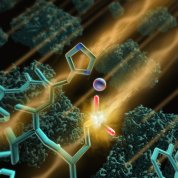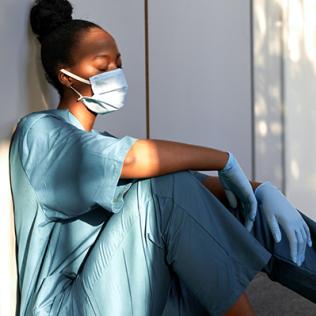
On the Cover
This image of beta-galactosidase at 3.2 Å resolution illustrates the differential effect that electron radiation (orange rays) has on different parts of proteins (green) during high-resolution cryo-electron microscopy imaging. Acidic side chains, like glutamate (bottom, red atoms) break down first, before more basic side chains, like histidine (top, blue atoms).
Veronica Falconieri & Sriram Subramaniam, NCI





